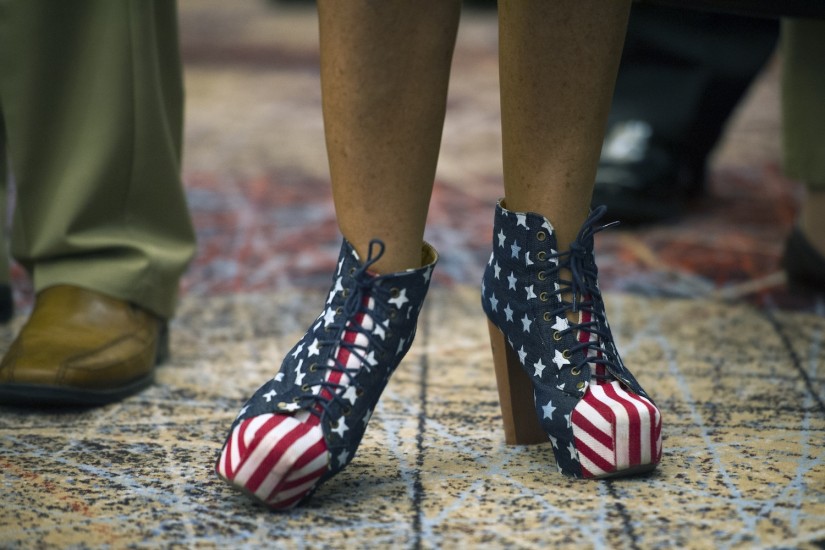Perhaps the first person to get starry-eyed over the Stars and Stripes was Francis Scott Key, who wrote the poem “The Star-Spangled Banner,” after watching British warships attack Fort McHenry in Baltimore during the War of 1812. Four years later, the poem was set to the tune of the well-loved British drinking song, “To Anacreon in Heaven.”
But what Wertkin refers to as a “flag cult” didn’t start until 1861, when seven Southern States ceded from the Union, formed a new government called the Confederate States of America, and attacked the U.S. Army’s Fort Sumter in Charleston, South Carolina, on April 12, 1861, launching the Civil War. Then, the Confederate army had its own flag (which is not the so-called Rebel Flag that we think of as the Confederate flag today). American citizens declared their devotion to the original Union by waving the Star-Spangled Banner over homes, mantles, schools, churches, and chambers of commerce.

Starting in the early 20th century, patriotic needlework patterns, like the one used to make this “Solid as the Oak” pillow cover (circa 1900), could be traced from women’s magazines or purchased at department stores. (Courtesy Kit Hinrichs, from Long May She Wave)
“Reverence for the flag intensified into a civil religion with the sight of the Stars and Stripes accompanying men going off to war and draping the coffins of fallen soldiers,” Wertkin writes. “Yankee mothers even taught their daughters to make small flags—sometimes called Bible flags because they were tucked into the family Bible—to foster patriotic devotion. The Star-Spangled Banner resonated emotionally with citizens who displayed their loyalty and affection by integrating the flag motif into everyday life.”
After the war, the American Centennial of 1876, along with the Philadelphia World’s Fair that year, only solidified the newfound importance of the flag as a patriotic symbol. It was also a time when new technology, including photography and offset lithography, led to an explosion of advertising, such as tin signs, product tins and labels, trade cards, pinbacks, and paper hand fans.
“Politicians and merchants, quick to capitalize on the cult of the flag, appropriated the popular icon for their own purposes,” Wertkin writes. “Politicians printed their campaign slogans and portraits on flag banners, and merchants unabashedly wrapped their wares in flag packaging and made the Stars and Stripes part of their trademark
In the early 20th century, Plains Indians began making souvenir gauntlet gloves based on those worn by the U.S. Cavalry. This type of floral design, as seen on these glass-beaded gloves from 1960s, was often inspired by images in magazines. (Courtesy Kit Hinrichs, from Long May She Wave)
“By the late 1890s, the Stars and Stripes could be seen on everything from pincushions and pillowcases to clown costumes and pickled pork,” he continues. “In the absence of official flag guidelines, flag makers, commercial enterprises, and private citizens were free to follow their own fancy—and did.”
